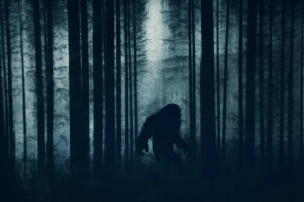
The legend of Bigfoot, also known as Sasquatch, has been a topic of fascination for centuries. From its roots in Native American folklore to its modern-day popularity, the story of this mysterious creature has captivated the imagination of people around the world. In this article, we will delve into the fascinating history of Bigfoot, exploring its origins, evolution, and the reasons behind its enduring appeal.
Nature and Origins of the Legend
The concept of Bigfoot is deeply rooted in the mythology and folklore of Native American tribes, particularly in the Pacific Northwest region of North America. The creature is described as a large, hairy, ape-like being that inhabits the wilderness, often associated with the forest and mountains. The earliest recorded stories of Bigfoot date back to the 19th century, with indigenous tribes such as the Salish, Haida, and Tlingit sharing tales of a wild, hairy creature that lived in the woods.
One of the most well-known Native American legends about Bigfoot comes from the Salish tribe, who called the creature “Sasq’ets” or “Wild Man of the Woods.” According to their stories, Sasq’ets was a powerful, supernatural being with the ability to control the forces of nature. The creature was said to be covered in dark brown or black fur, with glowing eyes and a strong, unpleasant odor.
Modern-Day Sightings and Popular Culture
The modern concept of Bigfoot as we know it today began to take shape in the 1950s and 1960s, with a series of reported sightings and alleged footprints found in the forests of Northern California and the Pacific Northwest. One of the most famous sightings was by a man named Andrew Genzoli, who claimed to have seen a giant, hairy creature walking through the woods in 1958.
The 1967 Patterson-Gimlin film, which appears to show a Bigfoot-like creature walking through the forest, further fueled the public’s fascination with the legend. The film, shot by Roger Patterson and Bob Gimlin, is still widely debated today, with some claiming it is conclusive proof of Bigfoot’s existence, while others argue it is a hoax.
Bigfoot has since become a staple of popular culture, with numerous films, TV shows, and books dedicated to the subject. The creature has been featured in everything from horror movies to comedy sketches, cementing its place in the public imagination.
Scientific Investigations and Theories
Despite the lack of concrete evidence, many scientists and researchers have attempted to investigate the possibility of Bigfoot’s existence. Some have proposed that the creature could be an unknown primate, such as a descendant of the giant ape Gigantopithecus, which is thought to have gone extinct thousands of years ago.
Others have suggested that Bigfoot sightings can be explained by misidentification of known animals, such as bears or gorillas, or by hoaxes and misinterpretation of natural phenomena. However, many reported sightings and alleged footprints remain unexplained, leaving the door open for further research and investigation.
Conclusion
The legend of Bigfoot is a fascinating example of how a cultural phenomenon can evolve over time, from its roots in Native American folklore to its modern-day popularity. Whether or not the creature actually exists, its impact on popular culture and the human imagination is undeniable. As we continue to explore the natural world and push the boundaries of scientific knowledge, the mystery of Bigfoot remains a captivating and enduring enigma, inspiring us to keep searching for answers and to never stop wondering about the unknown.
